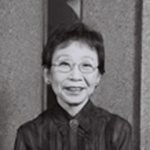I have lived in the United States since 1968. While I have adjusted well to life in America, I have also tried to maintain my Japanese identity. My upbringing and experience have led me to live a life between two cultures.
1. The Beginning: My Maternal Family in America
My life between two cultures began when my maternal grandfather, born in 1867 in Kyushu, decided that he wanted to emigrate to the United States. In 1887 he arrived in San Francisco, and two of his brothers followed him. Eventually he moved to Alameda and opened a nursery. During his life time, he visited Japan once, but never had any interest in returning permanently.
He married a woman from Kyushu, who had been a school teacher, through an arrangement made by a relative. In 1912, my mother, Midori, was born in Alameda, California; she was their second child. In 1914 or 1915, my grandmother returned to Kyushu with her three children to visit her parents. In 1915, while preparing to return to California, she and the youngest child died of typhoid. My grandfather was willing to raise the remaining boy, but he decided to leave my mother in the care of her Japanese grandparents and an unmarried aunt. Her grandmother was an enlightened woman who believed in educating women and sent her daughters to teacher training schools.
At the age of 17, when my mother completed girls’ high school, she returned to Oakland to live with her father, step-mother and two brothers. She studied art at the San Francisco Art School and learned to sew with an older cousin who took her under her wing. Midori apparently had a good ear for language, and picked up American English rather easily. Her life with her parents, however, was cut short when she was called back to Kyushu to nurse her dying grandmother. My mother never returned to live with her American family.
My father, Masao, was the second son of a merchant family in Takasaki, a midsize town in Gumma Prefecture, where he finished high school. After graduating from Keio University, while working at a bank, he was introduced to my mother and they were married in 1934. I think that my father was in part attracted to my mother, who had recently returned from America, because he was interested in new and Western things, and she was smartly dressed in a Western dress.
2. Shanghai
During the 1930s, the Japanese government was encouraging Japanese citizens to move to Japanese colonies. In 1939, my father was offered a job in a Japanese trading company and decided to move to China, then under Japan’s colonial control. My parents sold all their belongings and moved to China, never intending to return. Eventually, they settled in Shanghai’s Japanese neighborhood. At the age of six, I was enrolled in one of Shanghai’s six Japanese schools. I received an entirely Japanese public education, as prescribed by the Ministry of Education, using Japanese textbooks and taught by well-trained Japanese elementary school teachers.
I have few memories of World War II. My life was peaceful, generally happy and event-less. My parents were mostly apolitical, and I do not recall much discussion about the ongoing war.
After Japan’s catastrophic defeat, the Japanese military was disarmed and the Chinese took control of Shanghai. The 100,000 Japanese colonists were forced into in a small area. In early March, 1946, my family was sent back to Japan on an icebreaker, one of the few remaining Japanese ships. I did not want to leave Shanghai and prayed that we would somehow be able to return to our home the next morning.
3. A Stranger in the Homeland
At the end of the war, several million Japanese civilians and disarmed soldiers were sent back to Japan. This was a tremendous burden not only on the government, which had to make arrangements to bring them home, but more importantly, for many people in Japan who had endured four years of a vicious war, and who had to then accept relatives and family members, who appeared at their doorsteps unannounced because they had nowhere else to go. My parents and their four children—aged 11 to 2—went back to Takasaki to live near my father’s family.
For me, Japan was a strange country, as I had few memories of life in Japan. My parents enrolled me and my brother in the neighborhood public elementary school. Although I had had the same education as the other children, my classmates were strangers, and my school life was difficult. Understandably, the local children did not look kindly upon children who came back from overseas, who looked different and did not fit well in local community. To give one example, Japanese children in those days only wore wooden sandals (geta), for leather shoes were luxury. I had a pair of brand new leather shoes, the only footwear that I owned. Other children kept asking me why I did not wear geta like everyone else. I did not want to tell them that I could not bear to ask my parents to buy them because it would have meant an additional expense.
*This article was originally published in Voices of Chicago, online journal of the Chicago Japanese American Historical Society.
© 2010 Kyoko Inoue





